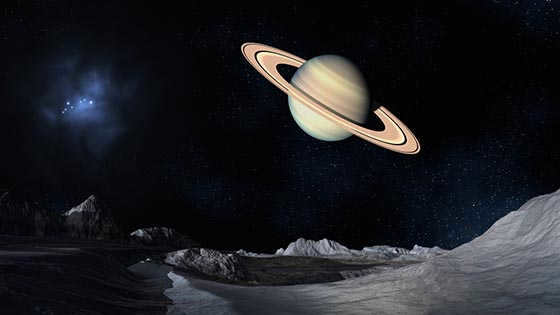Mercury is the first planet, Venus is the second planet, Earth is the third planet, and Mars is the fourth planet. Jupiter is the fifth planet, Saturn is the sixth planet, Uranus is the seventh planet, and Neptune is the eighth planet.
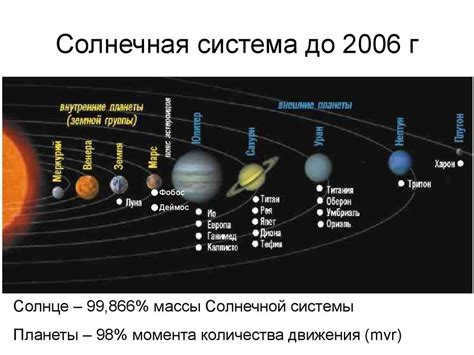

Table of Contents:
- How many planets are there?
- How many planets are there in the sky?
- What is the 9th planet?
- What is the smallest planet in the world?
- What is the 7th planet?
- What is the 6th planet?
What is our planet?
Our planet, Earth, is the third planet from the Sun. It is situated approximately 149,599,951 kilometers away from the Sun, which is equivalent to 0.00001581272727297704 light years.
Which planet is Earth among the 8 planets?
Within our Solar System, there are a total of 9 major planets. In order of their distance from the Sun, they are Mercury, Venus, Earth, Mars, Jupiter, Saturn, Uranus, Neptune, and Pluto. Additionally, there are numerous asteroids that can be considered as small planets.
How many planets are there in the solar system, 8 or 9?
Our solar system comprises of eight planets: Mercury, Venus, Earth, Mars, Jupiter, Saturn, Uranus, and Neptune.
According to this particular definition, there are eight confirmed planets in the solar system: Mercury, Venus, Earth, Mars, Jupiter, Saturn, Uranus, and Neptune.
What is the coldest planet in the world?
Having said that, Uranus, which is 1.7 billion kilometers closer to the Sun compared to other planets, stands out as the coldest planet in the entire solar system. Uranus experiences a minimum temperature of minus 224°C.
How many celestial bodies can be seen in the sky?
According to the International Astronomical Union, there are a total of 8 planets that exist within the solar system. These planets, in order of their distance from the Sun, include four terrestrial planets: Mercury, Venus, Earth, and Mars, followed by four gas giants: Jupiter, Saturn, Uranus, and Neptune.
Which planet has the highest temperature?
Venus is renowned for having an average surface temperature of 735 K (462 °C), making it the hottest planet in the entire solar system, despite Mercury being the closest to the Sun.
Which planet holds the title for being the largest in the solar system?
Jupiter, the largest planet in the solar system, will engage in a cosmic showdown with the Sun on June 10. A cosmic showdown occurs when a planet aligns with the Earth and the Sun, with the Earth positioned between the planet and the Sun.
What is the mysterious ninth planet?
The mysterious ninth planet is a hypothetical celestial body located in the outer region of our solar system. Its gravitational pull could potentially explain the unusual orbital distribution of detached trans-Neptunian objects (TNOs) primarily found in the scattered disk beyond the Kuiper belt.
What is the tiniest planet in the world?
The smallest planet in our solar system is Mercury.
What is in close proximity to the moon?
In the field of astronomy, a conjunction refers to a configuration where celestial bodies are positioned close together in the sky. Conjunctions commonly occur between the Moon and one of the following planets: Venus, Mercury, Mars, Jupiter, or Saturn. This phenomenon is purely optical in nature.
What led to the removal of a planet?
Pluto was disqualified as a planet in our solar system due to its inability to clear its orbit of other objects. This led to the creation of a new category for celestial bodies called dwarf planets.
Which is the most recently discovered planet?
- Neptune is the eighth and most recently discovered planet in our solar system.
- Mathematical calculations, rather than conventional telescope observations, led to the discovery of Neptune, making it the first planet in the solar system to be found in this way.
- Compared to the other gas giants – Jupiter, Uranus, and Saturn – Neptune is smaller in size.
What led to Pluto losing its classification as a planet?
Pluto no longer meets the criteria for being classified as a planet due to the fact that the mass of the other objects in its orbit is significantly larger than Pluto’s own mass, therefore not fulfilling the requirement of dominance.
According to the MAC definition, there are 8 planets that are currently known: Mercury, Venus, Earth, Mars, Jupiter, Saturn, Uranus, and Neptune.
What is the name of our planet?
Our planet is known as Earth, and it is the third farthest planet from the Sun in the Solar System. Additionally, Earth is the densest and fifth largest planet in terms of diameter and mass among all the planets in the Solar System. It is also the largest planet among the terrestrial group, which includes Mercury, Venus, and Mars.
What is the sixth planet in terms of number?
When it comes to numbering, the sixth planet in the Solar System is Saturn. It is the second largest planet after Jupiter and is classified as a gas giant. Saturn derives its name from the Roman god of agriculture.
What is the 6th planet in our solar system?
So, what planet is known as the sixth planet? The answer is Saturn. Saturn is a gas giant, which means it does not have a solid surface. The atmosphere of Saturn is primarily composed of hydrogen and helium.
Did our responses provide you with the information you were seeking?
Trending from the past 24 hours

There are no limitations when it comes to predicting your own future. Everything is based on your own desires and intuition.

What is the method of predicting the future using paper and a pen?
Take a piece of paper and fold it in a random manner. Then, place it under your pillow before going to sleep. When you wake up in the morning, interpret the symbols or words that appear on the paper as a way of predicting your future.

Is it possible for someone else to make guesses about your cards?
There may be situations where you are unable to use someone else’s Tarot deck, especially if the owner does not allow anyone else to touch them.


Have you ever wondered how to find your soulmate? Well, here’s an interesting technique you can try – using a hairbrush! Before going to bed at night, take a hairbrush that is exclusively yours and gently comb through your hair.

What is the optimal moment to engage in divination during the month of January?
The period for fortune-telling in January commences on January 6 and extends until Epiphany. It is advisable to employ a l.

What is the best time to practice divination during the Christmas or Epiphany holidays?
The time period between the celebration of Christmas on January 7th and Epiphany on January 19th, also known as C.

At what time does the tradition of New Year’s fortune-telling commence?
However, the presence of both the new and old chronologies has caused some slight confusion. As a result, there are several different interpretations regarding the exact start date.


What is the process of connecting yourself to a deck of Tarot cards?
In order to establish a connection, it is necessary to hold the printed deck in your hands and firmly press the cards against your palms.

What is the Church’s stance on Tarot cards?
Tarotism is a pseudo-religious, occult movement. Any claims regarding its affiliation with the Orthodox Church are unfounded.


Is it permissible to let individuals physically interact with Tarot cards?
The cards can be displayed and it is possible to suggest pointing to a specific card, but touching them is not permitted. Each Prak.
One – Mercury, Two – Venus, Three – Earth, Four – Mars. Five – Jupiter, Six – Saturn, Seven – Uranus, Followed by Neptune. He’s eighth on the list.
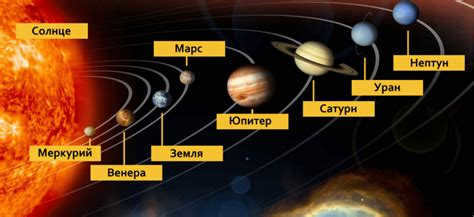
Contents
- What is the eighth planet from the Sun?
- When did life on Earth first appear?
- Which planet has the highest temperature?
- How many planets are there currently in our solar system?
Which planet is number 3 out of 8 in the solar system?
The solar system consists of 9 major planets, starting from the Sun they are Mercury, Venus, Earth, Mars, Jupiter, Saturn, Uranus, Neptune, Pluto and numerous asteroids – small planets.
What is the name of our planet?
Earth is the third planet in distance from the Sun in the Solar System. It is the densest, fifth largest in diameter and mass among all the planets in the Solar System, and the largest among the terrestrial group, which also includes Mercury, Venus, and Mars.
Venus is the second planet from the Sun, with an atmosphere mostly composed of carbon dioxide.
How far is our planet from the Sun?
Earth is positioned as the third most distant planet from the Sun, while Venus takes the title of the closest planet to Earth. Earth follows an orbit around the Sun and rotates on its axis. Beyond Earth’s orbit lie the orbits of Mars, Jupiter, and Saturn. At a significant distance from the Sun, Copernicus postulated the existence of a “sphere of fixed stars.”
The solar system consists of a total of 8 planets. Revolving around the Sun are Mercury, Venus, Earth, and Mars, which belong to the terrestrial group of planets. Additionally, there are Jupiter, Saturn, Uranus, and Neptune, classified as giant planets.
Pluto failed to clear its orbit of other objects, leading to its exclusion from the solar system’s planet classification. Instead, it is now classified as a dwarf planet, heading a new category of celestial bodies.
When did life on Earth originate?
The emergence of life on Earth began with the appearance of the first living organism, which occurred approximately 3.7 billion years ago (some reports suggest it could be as old as 4.1 billion years). Since then, the process of evolution has continued, leading to the development of all modern organisms. The similarities observed among these organisms suggest a common ancestor from which they have evolved.
How many planets exist in our galaxy?
Based on calculations, it is estimated that there could be anywhere from 800 billion to 3.2 trillion planets in the Milky Way galaxy that could support life. However, some experts propose an even higher estimate of around eight trillion planets.
Earth, our home, is the third planet from the Sun. While many people envision Earth as a perfect sphere, it is actually shaped like a flattened ball, known as a geoid. More than seventy percent of our planet’s surface is covered by water.
Jupiter is positioned as the fifth planet from its parent star, the Sun. It lies in between Mercury, Venus, Earth, and Mars.
Now, let’s talk about Saturn. Saturn holds the position of the sixth planet in the solar system. It is classified as a gas giant, lacking a solid surface. The composition of Saturn’s atmosphere is mainly hydrogen and helium.
Do you know which planet holds the title of being the coldest in the solar system?
Well, Uranus takes that honor. Despite being 1.7 billion kilometers closer to the Sun, Uranus is the coldest planet. It has a minimum temperature of minus 224 °C.
Now, let’s dive into the history of planet discovery. Who was the first to lay eyes on a new planet?
In December 1690, astronomer John Flamsteed became the initial observer of a planet, mistaking it for the star 34 Tauri. However, it was only on March 31, 1781, that Herschel correctly identified this “comet” as a planet after further examination.
Which planet is the hottest in the solar system?
Venus holds the title for being the hottest planet in the solar system, with an average surface temperature of 735 K (462 °C). This makes it hotter than Mercury, despite being farther away from the Sun.
What is the 6th planet in the solar system?
Saturn is the 6th planet from the Sun and is the second largest planet in the Solar System, with Jupiter being the largest. It is classified as a gas giant. The planet’s name is derived from the Roman god of agriculture.
There are still eight planets in the solar system. On August 24, Pluto was officially reclassified as a dwarf planet. Some astronomers disagreed with this decision and referred to it as “universal injustice”. The remaining planets in the solar system are as follows: rocky planets – Mercury, Venus, Mars, and Earth; gas giants – Saturn, Jupiter, Uranus, and Neptune.
Which planet is considered the most beautiful in the world?
Saturn is renowned as one of the most beautiful and popular planets in the solar system.
Which planet is the largest in the world?
Jupiter, the largest planet in the solar system, will align with the Sun on June 10. An alignment occurs when a planet is positioned in a straight line between the Earth and the Sun, with the Earth situated between the planet and the Sun.
Which planet is the largest in outer space?
The enormous gas giant Jupiter pales in comparison to the size of the exoplanet WASP-17 b. Located in the Scorpius constellation, approximately 1,307 light-years away from Earth, WASP-17 b boasts a diameter twice that of Jupiter, making it the largest planet in the universe.
Today, there are currently eight planets in the solar system – Mercury, Venus, Earth, Mars, Jupiter, Saturn, Uranus, and Neptune.
Which is larger, Pluto or Russia?
Pluto’s surface area (17.7 million km²) is slightly bigger than Russia’s (17.1 million km²).
As a result, it is impossible for any form of life to survive on Pluto’s harsh surface. The extreme cold, low atmospheric pressure, and constant atmospheric fluctuations make it uninhabitable for any known organism.
Prior to the existence of dinosaurs, there were smaller reptiles known as dinosauromorphs. These creatures were approximately the size of house cats and existed around 242-244 million years ago.
What was the Earth like in the pre-dinosaur era?
The Earth was surrounded by a dense combination of water vapor and carbon dioxide, along with an abundance of sulfur oxides, phosphorus, and other active elements. During that time, the Sun appeared noticeably dimmer than it does now, with some estimates suggesting its luminosity was up to 30 percent lower than its current state!
What is the official name of our Universe?
The concepts of the geocentric, heliocentric, and galactocentric world systems have been replaced by the understanding that we reside in an expanding Metagalaxy, known as our Universe. Within this vast expanse, there are countless galaxies.
Video: what exactly is our planet?
Did our responses provide assistance?
Planet Earth, the celestial body situated as the third planet from the Sun. It can be found at a distance of 149,599,951 kilometers from the Sun, which is equivalent to approximately 0.00001581272727297704 light years.
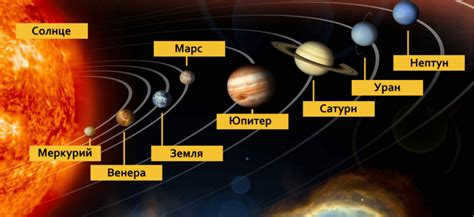
Table of Contents
- What is the first planet?
- Why was the ninth planet eliminated?
- Which planet is the coldest in the universe?
- What is the name of the eleventh planet?
What is the top planet?
The first planet is Mercury, the second is Venus, the third is Earth, and the fourth is Mars. Jupiter comes in fifth place, followed by Saturn in sixth place, and Uranus in seventh place, with Neptune coming in eighth place.
According to the MAC definition, there are a total of 8 known planets: Mercury, Venus, Earth, Mars, Jupiter, Saturn, Uranus, and Neptune.
Which planet is ranked sixth?
Saturn is the sixth planet in terms of distance from the Sun and is the second largest planet in the Solar System after Jupiter. Saturn is classified as a gas giant planet and is named after the Roman god of agriculture.
Our planet, Earth, is the third planet from the Sun. While many people believe that Earth is perfectly round, it is actually shaped more like a flattened ball, or what scientists call a geoid. Over seventy percent of Earth’s surface is covered in water.
Mercury (Mercurius, Mircurius, Mirquurius) is the deity in Roman mythology who presides over commerce, financial gain, and the accumulation of wealth. He is believed to be the offspring of Jupiter, the god of the sky. Some of his distinctive symbols include a staff called a caduceus, a helmet adorned with wings, sandals with wings, and often a bag of money.
The concept of the ninth planet revolves around a hypothetical celestial body located in the outer region of our solar system. It is postulated that this planet’s gravitational pull could account for the peculiarities observed in the orbital distribution of detached transneptunian objects (TNOs), which are primarily found beyond the Kuiper belt in the scattered disk.
Why was the 9th planet eliminated?
Why isn’t Pluto considered a planet? Pluto was disqualified as a planet in the solar system because it failed to clear its orbit of other objects, which led to its reclassification as a dwarf planet.
Jupiter, as the fifth planet from the Sun, is situated between its parent star and the planets Mercury, Venus, Earth, and Mars.
What is the most hazardous planet in the universe?
Venus holds the distinction of being the most dangerous planet in the solar system, with surface temperatures reaching up to 393 °C. This is hot enough to melt lead! It is even hotter than Mercury, the planet closest to the Sun.
Which planet is the Earth among the eight planets?
In our Solar System, there are a total of 9 major planets. These planets, in order of their distance from the Sun, are Mercury, Venus, Earth, Mars, Jupiter, Saturn, Uranus, Neptune, and Pluto. Additionally, there are numerous asteroids that are classified as minor planets.
Can you guess which planet holds the fourth position in this planetary lineup?
Now, let me share some general information about Mars. Mars is known as the fourth planet in the Solar System, making it the fourth most distant planet from the Sun. It is a part of the Earth group of planets and was named after the ancient Roman god of war, which corresponds to the Greek god Ares.
Which planet holds the record for being the coldest in the universe?
Interestingly enough, Uranus, which is located 1.7 billion kilometers closer to the Sun, claims the title of being the coldest planet in our solar system. With a minimum temperature of minus 224°C, Uranus is an icy world.
Which planet corresponds to the number 9?
Astrologers believe that Saturn is the planet that governs our values and helps us gain confidence to achieve our dreams. It is also associated with the number 9 because it guides us in completing important tasks, highlights our mistakes, and provides encouragement during challenging times.
The solar system is composed of 8 planets: Mercury, Venus, Earth, Mars, Jupiter, Saturn, Uranus, and Neptune.
These celestial bodies are known as Jupiter, Saturn, Uranus, and Neptune, arranged in sequential order based on their distance from the Sun. They share similarities in terms of their size and mass, both of which significantly surpass those of any planet within the Earth group (refer to this source for more details). Collectively, they account for 99.6% of the overall mass of all the planets in our solar system.
Within our solar system, there are now a total of 8 planets. As of August 24, Pluto was officially reclassified as a dwarf planet. This decision was met with dissent from astrologers, who labeled it as a “universal injustice”. The universally recognized planets now include rocky ones such as Mercury, Venus, Mars, and Earth; as well as gaseous ones like Saturn, Jupiter, Uranus, and Neptune.
Which planet holds the title for being the most aesthetically pleasing in the world?
Which planet holds the title for being the most aesthetically pleasing in the world? Saturn is widely regarded as one of the most stunning and renowned planets within our solar system.
Which astrological house governs wealth?
The position of money is indicated by the second house in the birth chart. By examining it, we can determine the areas in which we can generate income, the potential sources of income (both from work and other sources), and the number of income streams we have.
The 2nd house in the horoscope is responsible for: Your financial resources (cash, bank accounts, investments, electronic accounts) and movable possessions you own (such as cars, books, furniture, jewelry, clothes, etc.).
Which planet governs debts?
In astrology, Mercury is associated with change and is also responsible for commerce, finance, communication, planning, and transportation.
What is the 11th planet called?
The 11th planet is known as Hygeia, which is named after the Greek goddess of health. It can be found in the main asteroid belt, which orbits the Sun between Mars and Jupiter. Hygeia is considered a dwarf planet and has a diameter of approximately 430 km, slightly larger than the distance from Moscow to Nizhny Novgorod.
Video: what is the planet?
Let’s watch a video that explores the concept of a planet.
Did our responses provide assistance?
The Earth is positioned as the third celestial body from the Sun and ranks fifth in terms of magnitude. It holds the title of being the most massive, expansive, and dense among all entities in the Earth category. It is commonly referred to by other names such as the Blue Planet, Mir, or Terra. Currently, it stands as the sole planet recognized to harbor life.
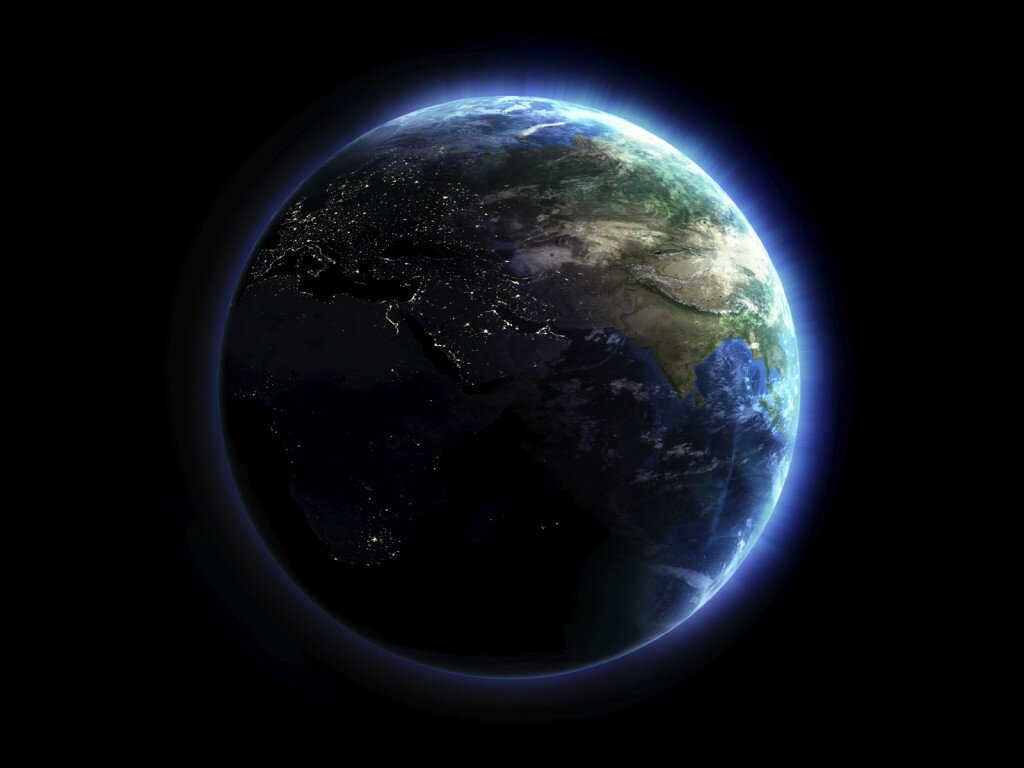
According to scientific studies, the Earth was created approximately 4.54 billion years ago from a solar nebula and acquired a solitary satellite, the Moon. Life emerged on the planet roughly 3.9 billion years ago. Since then, the biosphere has caused significant alterations to the atmosphere and abiotic factors. Consequently, the number of aerobic organisms has increased, and the ozone layer has formed. The magnetic field, in conjunction with this layer, mitigates the adverse effects of solar radiation on life. The radiation emitted by the Earth’s crust has significantly diminished since its initial formation due to the gradual decay of radionuclides. The planet’s crust is divided into multiple segments, known as tectonic plates, which shift a few centimeters annually.
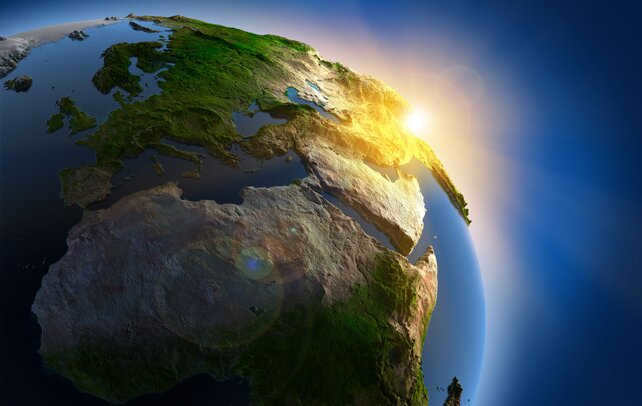
The Earth’s surface is made up of approximately 70.8% oceans, while the remaining area is occupied by continents and islands. The continents house various bodies of water such as rivers, lakes, groundwater, and ice. Combined with the World Ocean, these elements form the hydrosphere of the planet. The presence of liquid water, both on the surface and underground, is crucial for sustaining life. Additionally, the Earth’s poles are covered by ice caps, including the Antarctic ice sheet and the Arctic sea ice.
The Earth’s interior is highly active and consists of a thick, viscous layer known as the mantle. This layer surrounds the outer liquid core, composed of nickel and iron. These physical characteristics have supported life for approximately 3.5 billion years. Scientific estimates suggest that these favorable conditions will persist for another 2 billion years.
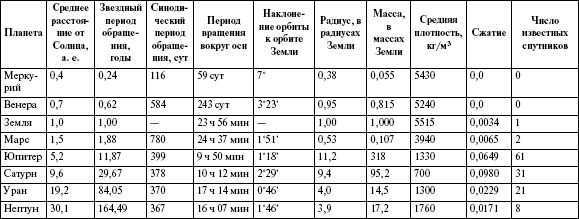
The Earth is subject to the force of gravity, just like other celestial bodies. It orbits around the Sun and completes one revolution in 365.26 days. The Earth’s axis is tilted at an angle of 23.44 degrees, which leads to seasonal changes that occur yearly. A day on Earth lasts approximately 24 hours. At the same time, the Moon orbits around the Earth, a phenomenon that has been happening since ancient times. The Moon’s presence causes ocean tides on our planet and also helps stabilize the Earth’s tilt, gradually slowing down its rotation. Some theories suggest that asteroids, also known as bolides, have impacted the Earth in the past, directly influencing the organisms that exist on it.
There are countless species that call Earth their home, including the human race. The planet is divided into 195 nations that engage in diplomacy, warfare, and trade as they interact with each other. Throughout history, humans have developed various theories about the universe, with some of the most well-known being the Gaia hypothesis, the geocentric model of the world, and the belief in a flat Earth.
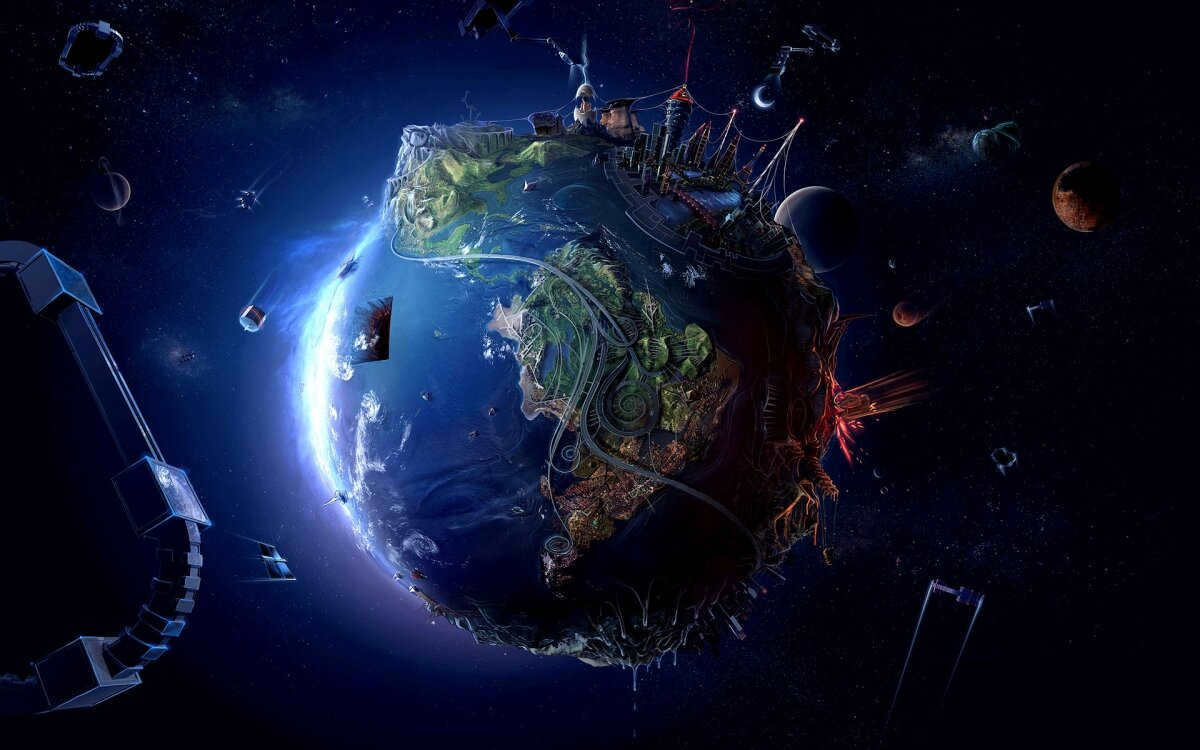
The origin story of our planet
The prevailing theory regarding the beginnings of Earth is known as the solar nebula hypothesis. According to this theory, the solar system emerged from a vast cloud of gas and dust, containing elements such as helium and hydrogen that were created during the Big Bang. This cloud began to contract around 4.5 billion years ago, due to a shock wave triggered by a supernova explosion. As the cloud contracted, its angular momentum, inertia, and gravity caused it to flatten into a protoplanetary disk. Within this disk, the debris began to collide and merge under the influence of gravity, giving rise to the formation of the first planetoids.
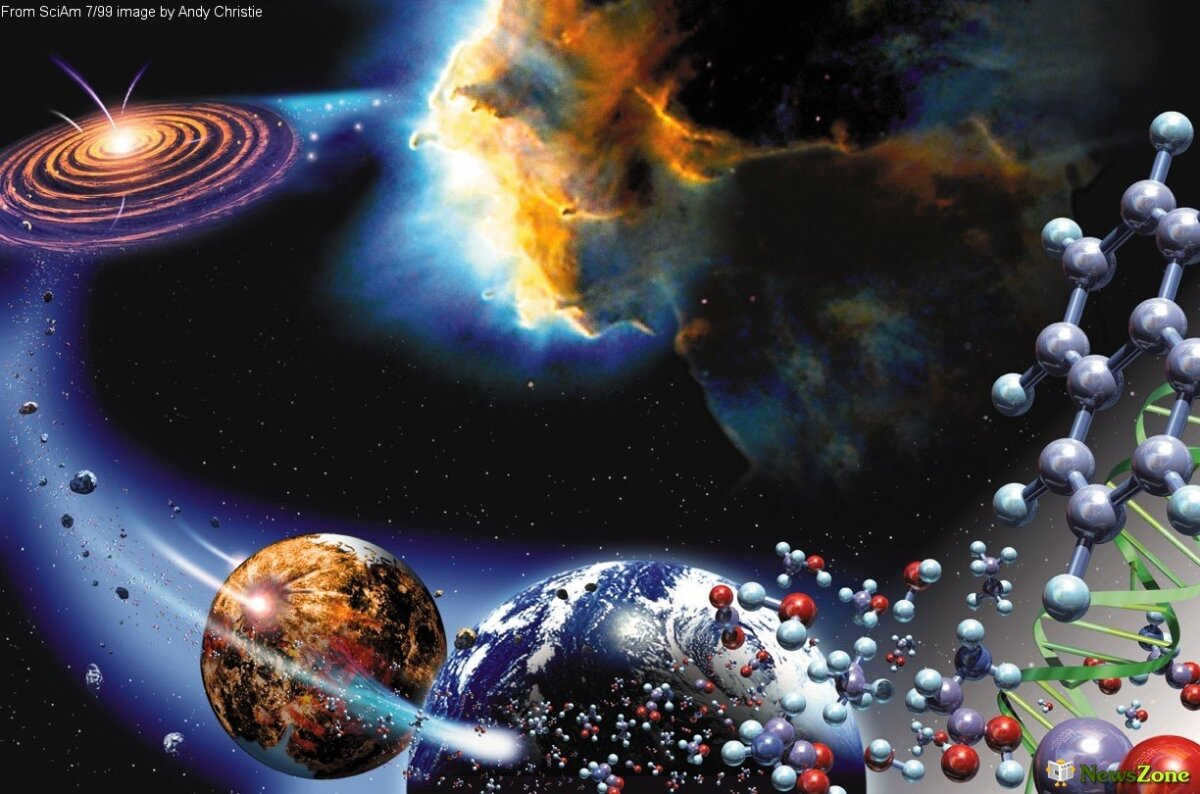
The process known as accretion led to the formation of planets, as dust, gas, debris, and planetoids gradually came together to create larger objects. This process took approximately 10-20 billion years.
The Moon, Earth’s only satellite, formed slightly later, and its origin remains a mystery. Various hypotheses have been proposed, one of which suggests that the Moon formed through the accretion of material left over from a collision between Earth and a Mars-sized object. The outer layer of Earth was vaporized and melted, with some of the mantle being ejected into orbit, resulting in the Moon’s unique composition and depleted metal content. Its own gravitational pull caused it to assume a spherical shape and become the Moon as we know it.
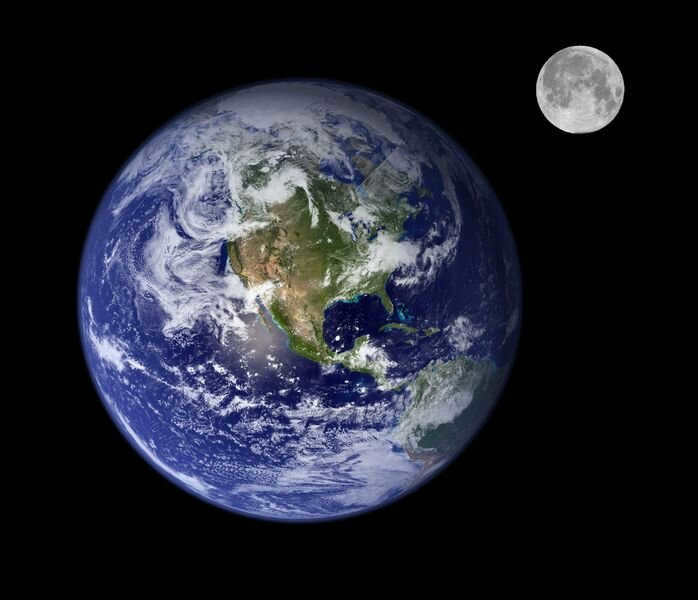
The proto-Earth experienced growth through accretion and underwent intense heating, causing minerals and metals to melt. Elements with affinity for iron, known as siderophile elements, began to sink towards the Earth’s core, leading to the differentiation of the planet’s internal layers into the mantle and metallic core. As a result, the Earth’s magnetic field started to take shape. Volcanic activity and the release of gases contributed to the formation of an atmosphere. Water vapor condensed and formed oceans through ice-enhanced condensation. During this period, the Earth’s atmosphere primarily consisted of light elements helium and hydrogen, with a significant amount of carbon dioxide compared to its present state. Approximately 3.5 billion years ago, the Earth’s magnetic field emerged, providing protection against the ravages of the solar wind.
The surface of the planet has undergone transformations for hundreds of millions of years. Over time, new continents have emerged and vanished, occasionally coming together to form a supercontinent. Approximately 750 million years ago, the first supercontinent, Rodinia, began to fragment. Eventually, its fragments coalesced to create a new supercontinent called Pannotia. After approximately 540 million years, Pangea formed through another round of fragmentation. Pangea remained intact for 180 million years before breaking apart.
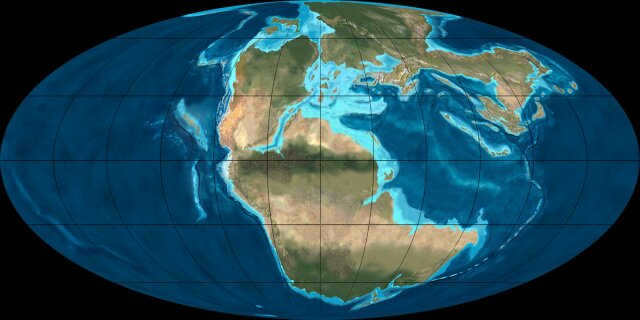
The origin of life on Earth
There are numerous hypotheses and theories regarding this topic. One of the most widely accepted theories suggests that approximately 3.5 billion years ago, a single universal ancestor gave rise to all present-day organisms.
Thanks to the advancement of photosynthesis, living organisms were able to harness the energy of the sun. This led to the gradual filling of the atmosphere with oxygen and the formation of an ozone layer in the upper atmosphere. The symbiotic relationship between larger cells and smaller cells paved the way for the development of eukaryotes. Around 2.1 billion years ago, multicellular organisms emerged.
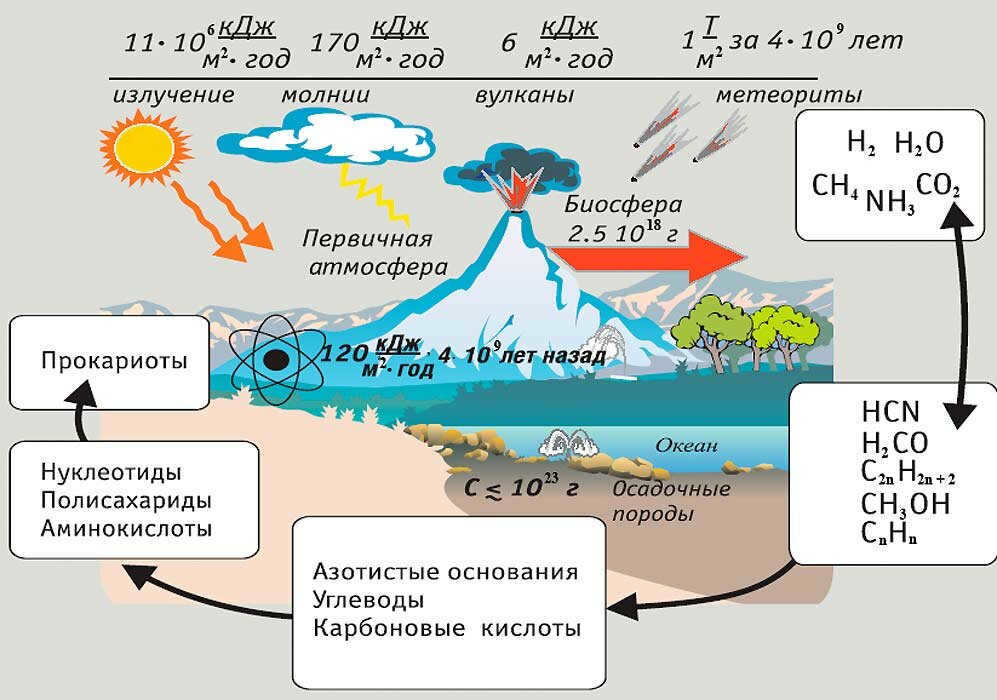
In 1960, researchers proposed the theory of a frozen Earth, suggesting that between 750 and 580 million years ago, our planet was completely covered in ice. This hypothesis provides a plausible explanation for the Cambrian explosion, a period of rapid diversification of life forms. Recent evidence has supported this hypothesis, confirming its validity.
The first signs of algae emerged approximately 1.2 billion years ago, while the earliest known higher plants appeared around 450 million years ago. Invertebrates emerged during the Ediacaran period, with vertebrates appearing during the Cambrian explosion.
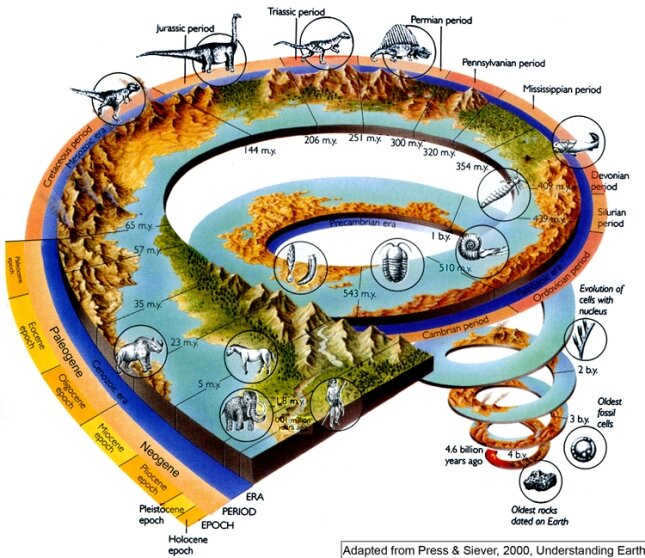
Approximately 40 million years ago, the commencement of the most recent ice age took place. The peak of this ice age occurred during the Pleistocene epoch, which happened around 3 million years ago.
The Composition of the Earth
Our planet is a member of the earth group and possesses a solid exterior. It boasts the highest density, mass, gravitational force, magnetic field, and size. Earth stands as the sole known planet to exhibit active movement of its tectonic plates.
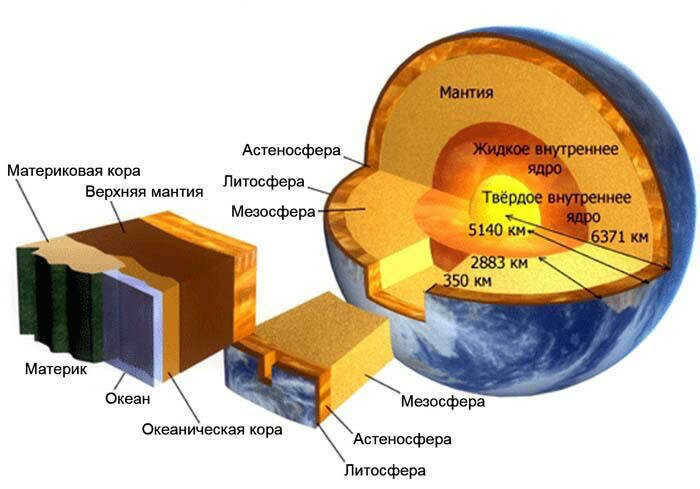
The planet we call Earth is unique in its composition, with distinct layers that are defined by their physical and chemical properties. Unlike other planets, Earth has a clear distinction between its outer and inner core. The outer layer is made up of a solid shell primarily composed of silicate materials. This outer layer is separated from the mantle by a boundary where seismic waves travel at an increased velocity. Below the mantle is the asthenosphere, a region of the Earth’s interior that is more viscous than the layers above it. The upper part of the mantle and the solid crust make up the lithosphere.
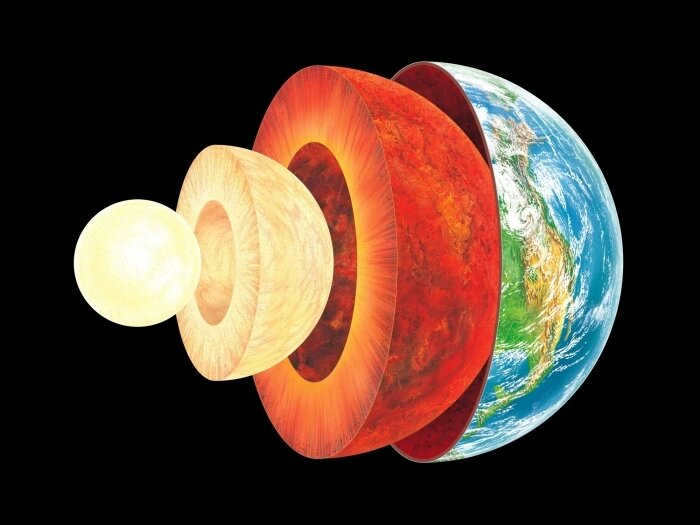
At a depth of 660 km, the main modifications take place in the arrangement of crystals. This division separates the upper mantle from the lower mantle. Beneath the mantle lies a liquid layer comprised of molten iron infused with sulfur, nickel, and silicon. This layer constitutes the Earth’s core. Seismic measurements have provided evidence that the core is composed of two distinct sections – a fluid outer region and a solid inner region.
Form
The shape of the Earth is that of a compressed ellipsoid. The planet has an average diameter of 12742 km and a circumference of 40000 km. The bulge at the equator is a result of the Earth’s rotation, causing the equatorial diameter to be 43 km larger than the polar diameter. Mount Everest is the highest elevation, while the Mariana Trench is the deepest point.
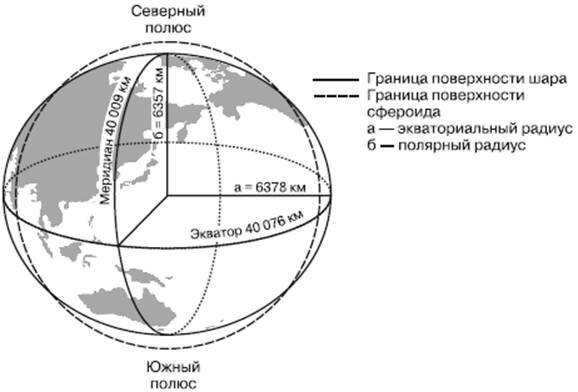
Chemical makeup
The Earth has an estimated mass of 5.9736-1024 kg and contains approximately 1.3-1.4-1050 atoms. Its chemical composition consists of 32.1% iron, 30.1% oxygen, 15.1% silicon, 13.9% magnesium, 2.9% sulfur, 1.8% nickel, 1.5% calcium, 1.4% aluminum, and the remaining 1.2% is made up of other elements.
The Earth, similar to other planets, possesses a stratified internal composition consisting primarily of a metallic core and rigid silicate shells. The planet’s internal heat is sustained by a blend of remaining thermal energy and the decay of radioactive isotopes.
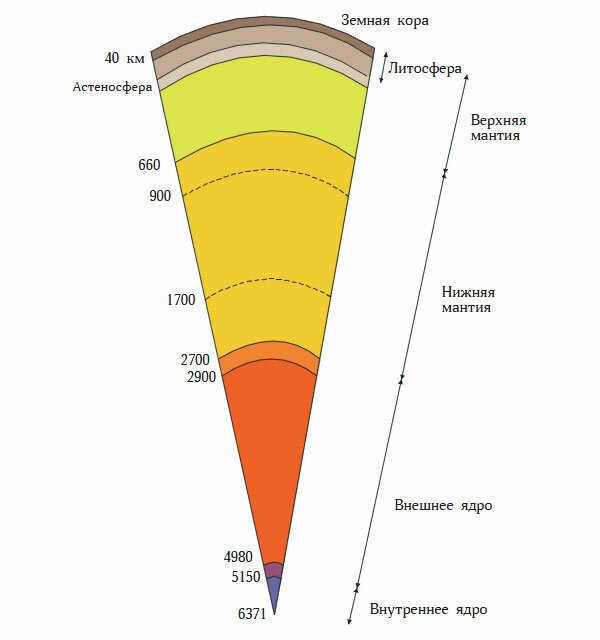
The Earth’s lithosphere, which is made up of the upper part of the mantle and the crust, forms the solid outer shell of our planet. Within the lithosphere, there are mobile fold belts as well as stable platforms. These lithospheric plates are in constant motion, floating on the plastic asthenosphere below. The asthenosphere behaves like a superheated fluid with a viscosity similar to that of honey, causing the velocity of seismic waves to decrease.
The crust, which is the uppermost solid layer of the Earth, is separated from the mantle by the Mohorovitch boundary. There are two types of crust – oceanic and continental. Oceanic crust is primarily composed of rocks with a basic composition and a sedimentary cover. On the other hand, continental crust is composed of a mixture of granitic, sedimentary, and basaltic rocks. The Earth’s crust is divided into lithospheric plates of various sizes, which constantly move and interact with each other.
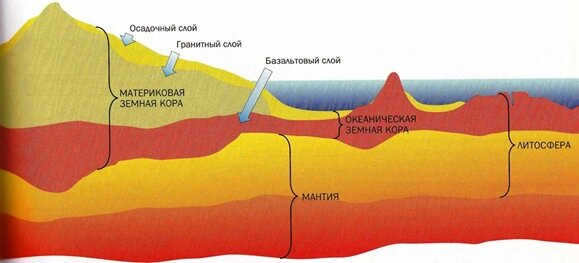
The silicate shell known as the Earth’s mantle is positioned between the core and the Earth’s crust. Comprising 67% of the total mass and approximately 83% of the volume of the planet, it spans a wide range of depths and undergoes phase transitions that impact the density of the mineral structure. Furthermore, the mantle is differentiated into both a lower and upper section, with the latter being composed of the substrate, the Gutenberg layer, and the Golitsyn layer.
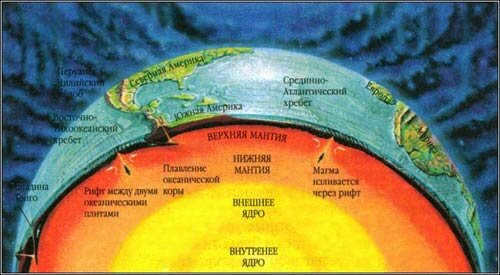
The findings of the current investigation propose that the structure of the Earth’s mantle is akin to chondrites – stony meteorites. Mainly, it consists of oxygen, silicon, iron, magnesium, and other chemical elements. These elements, together with silicon dioxide, combine to form silicates.
The innermost and most central part of the Earth is known as the Core (geosphere). It is believed to be composed of iron-nickel alloys and siderophilic elements. The Core is situated at a depth of 2900 km, with an approximate radius of 3485 km. The temperature at its center can reach up to 6000°C, accompanied by pressures as high as 360 GPa. The estimated mass is 1.9354-1024 kg.
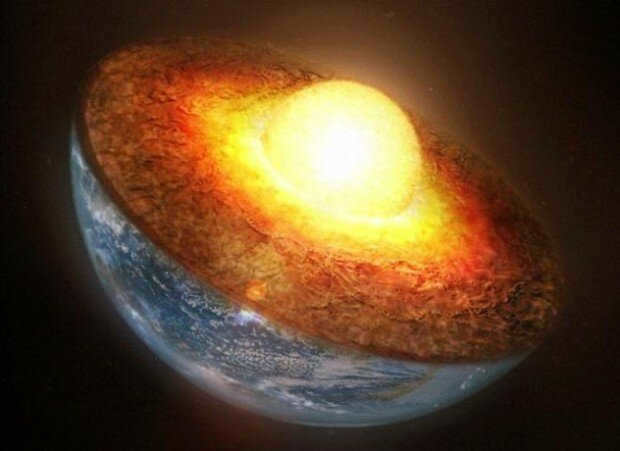
The geographical envelope represents the surface areas of our planet. Our planet, Earth, possesses a diverse range of topography. About 70.8% of Earth’s surface is covered by water. The underwater terrain is characterized by mountains, including mid-ocean ridges and submarine volcanoes, as well as oceanic plateaus, troughs, submarine canyons, and abyssal plains. The remaining 29.2% of Earth’s surface consists of various landforms such as deserts, mountains, plateaus, and plains.
The planet’s surface is constantly shaped by tectonic processes and erosion. Precipitation, temperature fluctuations, weathering, and chemical influences also play a significant role in shaping landforms. Additionally, glaciers, coral reefs, meteorite impacts, and coastal erosion have unique effects on the planet’s surface.
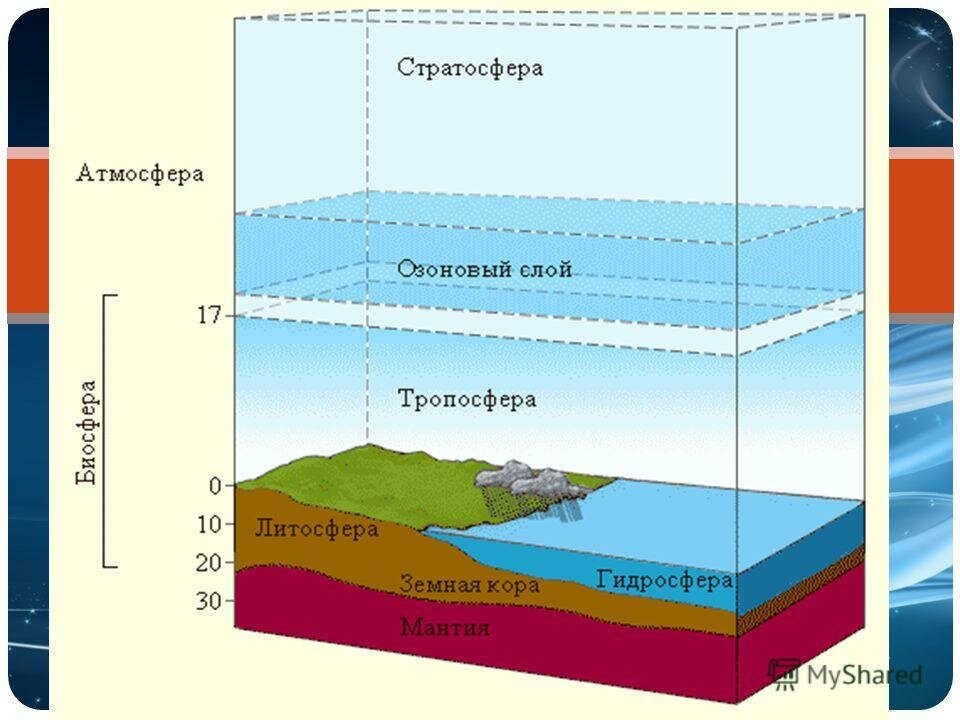
Gas Envelope Surrounding the Planet
The gas envelope surrounding the planet, known as the atmosphere, consists primarily of oxygen and nitrogen. There are also small amounts of carbon dioxide and water vapor present. Over time, the atmosphere has undergone significant changes as a result of the influence of the biosphere. The emergence of oxygenic photosynthesis led to the development of aerobic organisms. In addition to providing protection against cosmic rays, the atmosphere plays a crucial role in determining the weather on the planet’s surface. It also regulates the circulation of air masses, the water cycle, and heat transport. The atmosphere can be divided into several layers, including the stratosphere, mesosphere, thermosphere, ionosphere, and exosphere.
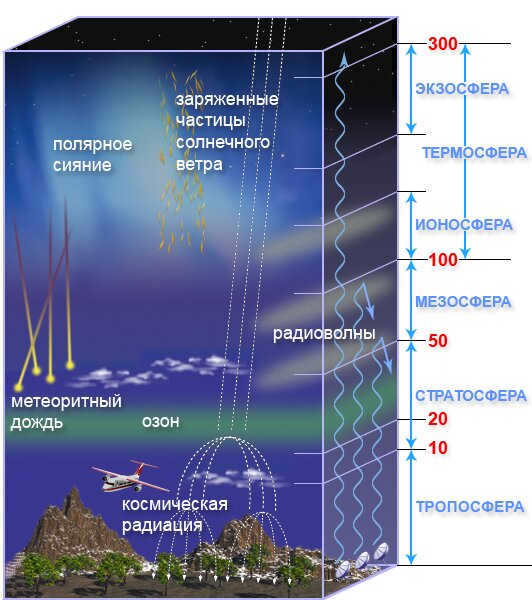
The chemical composition of our planet is made up of nitrogen, which accounts for 78.08% of the atmosphere, oxygen, which makes up 20.95%, argon, which makes up 0.93%, and carbon dioxide, which makes up 0.03%.
The Biosphere
The biosphere refers to the parts of the planet’s envelopes that are inhabited by living organisms. These parts, including the lithosphere, atmosphere, and hydrosphere, are influenced by the actions of these organisms and contain the results of their life processes. The biosphere is home to millions of different species, including animals, microorganisms, fungi, and plants.
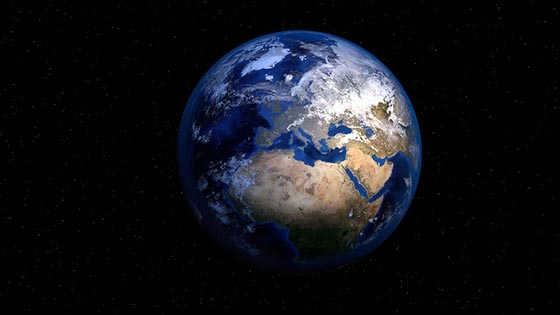
Stars and planets are common terms that are widely used by people of all ages. It is important to understand the definition of a planet, its composition, and how it differs from a star. In the past, children would learn about these concepts in astronomy classes, but nowadays, they often acquire knowledge about the universe from science fiction literature and movies.
What is the definition of a planet?
The term “planet” is derived from the Greek word meaning “wandering”. This designation originated from observations of the celestial sphere.
Ancient Greek astronomers observed that most stars remain fixed in relation to each other, while some exhibit a continual wandering motion across the sky, appearing in different constellations. These wandering stars were referred to as planets.
Only five planets are visible to the naked eye: Mercury, Venus, Mars, Jupiter, and Saturn. The planet Uranus was not discovered until the invention of the telescope in 1781.
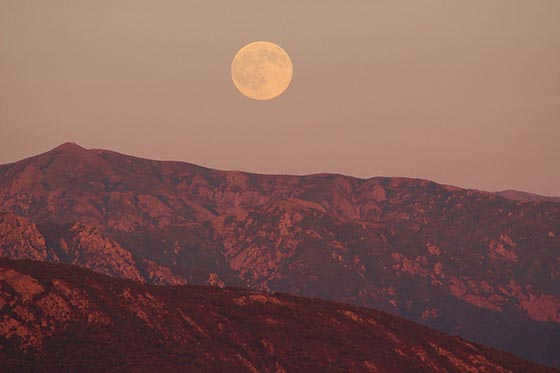
After sixty years, the planet Neptune was discovered, and its orbit and other characteristics were first calculated theoretically, and then observed by the German astronomer Halle through a powerful telescope.
The most recent addition to the solar system’s planets, Pluto, was only found in 1930, although its existence had been predicted using mathematical formulas.
In modern times, astronomers define a planet as a celestial body that is large enough to become spherical due to its own gravity and orbits a star in a stable orbit.
A planet can either be a solid object or a gas-dust cloud, but it does not generate its own thermonuclear reactions, meaning it does not emit light or heat.
The planets within our solar system possess distinct characteristics that differentiate them from one another, making it impossible to confuse them.
One key distinction among the planets is their varying proximity to the Sun, resulting in an uneven distribution of solar energy. Mercury, being the closest, experiences an intense amount of heat and light, particularly on the side facing the Sun. In contrast, the more distant planets receive insufficient light and heat, rendering their surfaces barren and devoid of life.
Size serves as a significant determinant of a planet’s nature. Jupiter takes the crown as the largest planet, followed by Saturn in second place. However, these giant planets possess relatively low density due to their composition of dust and gases rather than solid matter.
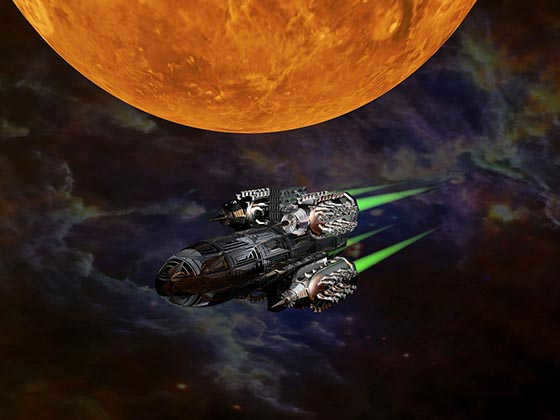
Planets come in different shapes and sizes, and some have moons while others do not. The number and size of moons can also vary. For example, Earth has only one moon called the Moon, while Mars has two moons named Deimos and Phobos. Jupiter, on the other hand, has a very large number of moons, and Saturn not only has moons but also a magnificent ring that encircles the planet’s equator.
Each planet rotates at a different speed and in a different direction around its axis. The larger planets tend to rotate much faster than Earth, while Mars and Venus rotate at a slower pace. Interestingly, Venus rotates “lying on its side” as its axis of rotation is tilted compared to its orbit.
There are numerous additional distinctions to be discovered, as each planet represents a distinct world that is entirely unlike any other. Presently, we possess only a notion of the appearance of Mars and the Moon’s surfaces, but in due time, humanity will undoubtedly have the opportunity to explore each planet within the solar system.
What sets a star apart from a planet?
In the past, astronomers distinguished between stars and planets based on their motion: planets move across the sky, orbiting around the Sun, while stars remain stationary. To be more precise, the naked eye is unable to detect the movement of stars, even though they revolve around the center of the Milky Way galaxy.
However, modern knowledge has revealed additional disparities between planets and stars:
– Stars are millions of times larger than planets.
– Stars undergo thermonuclear reactions in their cores, whereas planets do not.
– Stars emit light and heat, whereas planets merely reflect the radiance of stars.
